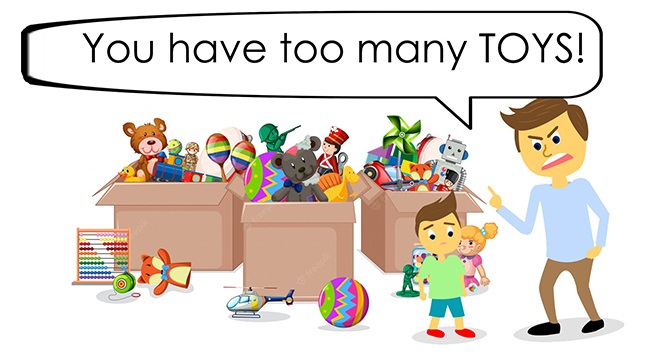As parents, we want to provide our children with everything they need and want, including an abundance of toys to play with. However, research suggests that having too many toys can actually be detrimental to a child's development and overall well-being. That's where the "20 toy rule" comes in.

But what exactly is the 20 toy rule? Essentially, it's a suggestion that parents limit the number of toys their children have at any given time to a maximum of 20. This may seem like a small number, especially if you have a child who loves toys, but there are actually a number of benefits to following this rule.
First and foremost, having a smaller number of toys can help children focus and engage more with each individual toy. When faced with a plethora of options, it can be overwhelming and difficult for children to decide what to play with. This can lead to short attention spans and an inability to fully immerse themselves in their play. On the other hand, having just a few toys allows children to give each toy their full attention and really get the most out of their playtime.
In addition to helping with focus and engagement, the 20 toy rule can also reduce clutter and make it easier for children to clean up and put away their toys. It's no secret that kids' toys can quickly take over a room, making it feel cramped and chaotic. By limiting the number of toys, it's much easier for children to keep track of their belongings and put them away when they're finished playing. This can also save time and energy for parents, as there will be fewer toys to pick up and organize.
But the benefits of the 20 toy rule go beyond just organization and focus. Having a smaller number of toys may also encourage children to be more creative and imaginative in their play. When children have too many options, they may be more likely to simply go through the motions with a toy rather than using their imagination to come up with new and exciting ways to play. With fewer toys, children may be more inclined to think outside the box and come up with creative solutions to their play.
It's important to note that the 20 toy rule is just a suggestion, and every child is different. Some children may thrive with a larger number of toys, while others may do just fine with fewer options. Ultimately, the key is to find a balance that works for your child and your family.
If you're considering implementing the 20 toy rule in your home, there are a few things you can do to make the transition easier. First, it's important to involve your child in the process. Have them help you go through their toys and decide which ones they want to keep and which ones they no longer need or use. This will not only help them feel like they have a say in the matter, but it will also help them to understand the importance of decluttering and letting go of items they no longer need.
You may also want to consider rotating toys in and out. This means keeping a smaller number of toys out and available for play, and then periodically swapping them out for a different set of toys. This can help to keep things fresh and interesting for your child, while still limiting the number of toys they have access to at any given time.
Another tip is to focus on quality over quantity. Rather than buying a large number of cheap, low-quality toys, consider investing in a smaller number of higher quality toys that will stand the test of time. This not only saves money in the long run, but it also ensures that your child has a selection of toys that are well-made and engaging.
Finally, it's important to remember that the 20 toy rule is just a guideline, and there is no one-size-fits-all solution when it comes to the number of toys a child should have. Every child is different, and what works for one family may not work for another. The key is to find what works best for your child and your family, and to be mindful of the benefits of having a smaller number of toys.
So if you're feeling overwhelmed by the clutter and chaos of your child's toys, consider giving the 20 toy rule a try. It may take some time to adjust, but the benefits for your child's development and well-being, as well as your own sanity, may be well worth it.
If you've been thinking of selling your child's old toys, consider selling them on FiddlePiddle.com - a toy marketplace which doesn't charge any fees to list or join. Its absolutely free! It's really easy to join (all you need is an email and password) and you get paid instantly! We developed this platform because of the frustrations many people have when trying to list their toys on Amazon or eBay. Go on and give it a try - it's really easy!


